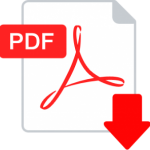Description of DAE:
Distillate Aromatic Extract Rubber oil as DAE have very high aromatic contents. Distillate aromatic extracts are obtained as a by-product of the process of solvent extraction of vacuum distillates used as a raw material in the manufacture of p m lubricant base oils. DAE grades are DAE 10, DAE 11, DAE 20, DAE 40, DAE 50, DAE 60 .
Aromatic extracts refer to solvent extracts of distillates or the residue (residuum) from a vacuum tower; these substances are complex, highly viscous liquids that contain predominately aromatic hydrocarbons covering the carbon number range of C15 to C50. Aromatic extracts are produced during the refining of lubricating oil base stocks and waxes.
The aromatic extracts can be grouped into two subcategories, distillate aromatic extracts (DAEs) and residual aromatic extracts (RAEs), according to the class of lubricating oil feedstock from which they are derived. The aromatic extracts are used as blending components of heavy fuels, as feed stock for production of carbon black, petroleum pitches and resins, and in the manufacture of rubber and plastics.
To meet the HPV Challenge, the Testing Group has thoroughly evaluated the substances within the Aromatic Extracts category and has made all of the reliable human health and ecological hazard data available to the public. The environmental fate of aromatic extracts is determined by the individual hydrocarbons present within the mixture.
Because of their physical and chemical properties, these substances will tend to agglomerate rather than disperse if released to the environment. Some aromatic extracts have been found to cause toxicity in freshwater invertebrates and algae. The human health effects of aromatic extracts vary between acute and repeated-dose studies and between DAEs and RAEs.
What are the DAE’s:
There are 3 substances included in the distillate aromatic extracts (DAEs) assessment. These 3 substances are a subset of aromatic extract substances and are complex combinations of hydrocarbons. These aromatic extracts are produced as by-products during the refining of crude oil.
These DAEs can be blended to make other petroleum substances.
Due to their untreated nature, these substances have high levels of aromatic compounds, including polycyclic aromatic hydrocarbons (PAHs).
Properties of DAE
- Good abrasion resistance
- Good low temperature flexibility
- Low amounts of waste tires in the process
- Good resistance to reversion
- Save fuel and energy consumption
- Extended tires life time
- Low environmental impact
Uses of DAE:
Treated Distillate Aromatic Extract Oil is used by LANXESS as an ingredient (softener/plasticizer) or processing aid in the production of natural and synthetic rubber products. The chemical compound is also used as an ingredient in certain engine, gear and lubricating oils.
Other uses:
- Carrier oils.
- Plasticizer.
- Diluents & filling agent.
- Good Solubility Properties.
- processing ability of rubber in milling and mixing.
- Heavy fuels.
- Feed stock for production of carbon black.
- Petroleum pitches and resins.
PACKING of DAE OIL
Packing DAE10, DAE20, DAE40, DAE50, DAE60 can be in new steel drum, one new steel drum capacity is 200-210 liter , recondition or used drum also can contain same quantity per drum totally 16.500 to 17.000 MT DAE different grade can load on one 20foot container equal to 80 drum, ISO tank capacity is 20 MT net weight same as flexi tanks.
Specification of DAE:
| Characteristic | Test method | 60 | 50 | 40 | 20 | 11 | 10 |
| Kinematic viscosity @ 100°C, cSt | ASTM D-445 | 60.0 | 50.0 | 40.0 | 20.0 | 11.0 | 10.0 |
| Flash point , °C | ASTM D-92 | 300 | 265 | 265 | 240 | 215 | 215 |
| Pour point , °C | ASTM D-97 | 20 | 20 | 15 | 15 | 9 | 9 |
| Specific gravity @ 15 , Kg/m3 | ASTM D-1298 | 995 | 1020 | 1010 | 1005 | 1000 | 1000 |
| Aniline point, °C | IP-2 | 65 | 40 | 50 | 45 | 30 | 35 |
| Sulphur content, Wt% | ASTM D-2622 | 5 | 5 | 5 | 4 | 5 | 3 |
| Ash content , Wt% | ASTM D-482 | 0.15 | 0.15 | 0.15 | 0.15 | 0.1 | 0.1 |
| Carbon type analysis , % | |||||||
| CA | ASTM D-3238 | 35 | 50 | 30 | 40 | 60 | 55 |
| CN | ASTM D-3238 | 5 | 5 | 4 | 15 | 1 | 1 |
| CP | ASTM D-3238 | 60 | 45 | 65 | 45 | 39 | 44 |



